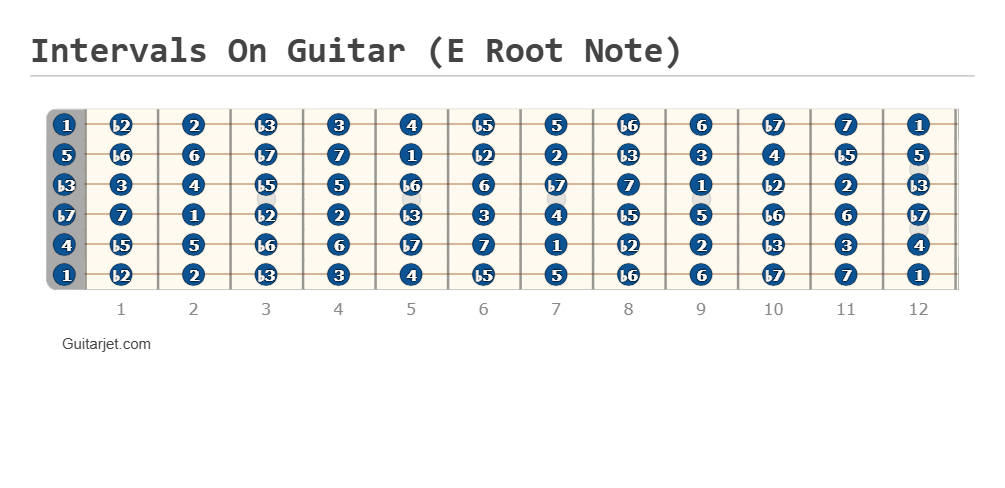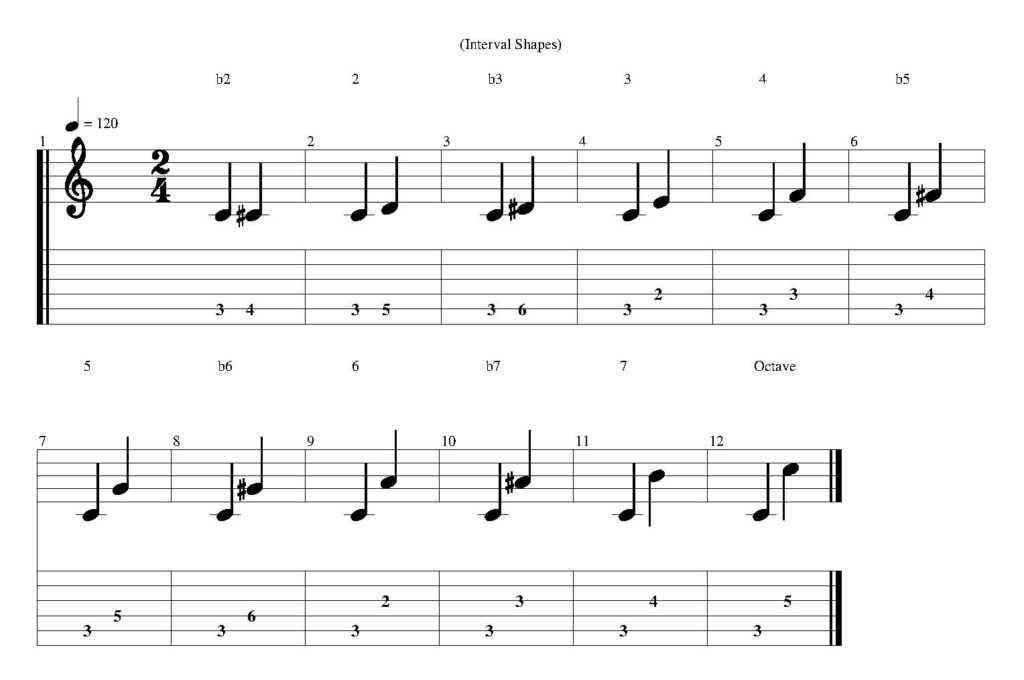Learning intervals on guitar is an important step for understanding scales, chords, and music theory as a whole.
In this post, you’ll learn the names of guitar intervals, how to visualize their shapes on the fretboard, and a simple exercise to help you practice.
And your bonus: Free PDFs are included!
Table of Contents
What is an interval?
An interval defines the distance between 2 notes.
Whole and half steps
A whole step = 2 frets (Whole tone)
A half step = 1 fret (Semitone)
Interval names
Here are the interval names. When you use the musical alphabet (C to B), intervals help describe how far apart one note is from another note.
When you play all 12 intervals (or notes) in order, you get the chromatic scale.
In this chart, you can see how each interval is named when starting from the root note C. It shows the distance from C to every other note in the chromatic scale.
| C | Perfect Unison | 1 |
| C# / Db | Minor 2nd | b2 |
| D | Major 2nd | 2 (9) |
| D# / Eb | Minor 3rd | #2 or b3 |
| E | Major 3rd | 3 |
| F | Perfect 4th | 4 (11) |
| F# / Gb | Tritone (Aug 4th / Dim 5th) | #4 or b5 |
| G | Perfect 5th | 5 |
| F# / Gb | Aug 5th / Minor 6th | b6 |
| A | Major 6th | 6 (13) |
| F# / Gb | Minor 7th | b7 |
| B | Major 7th | 7 |
| C | Perfect Octave | 8 |
Intervals on guitar fretboard
Here are the intervals on the fretboard using E as your root note.

Interval shapes
Here you can see and visualize the interval shapes relative to the root note C. Play the C note, then play your target interval.

Guitar Intervals exercise
Here’s a simple guitar intervals exercise to help you recognize them on the fretboard. It’ll help you memorize the interval names, sounds, and shapes relative to the root note C.

